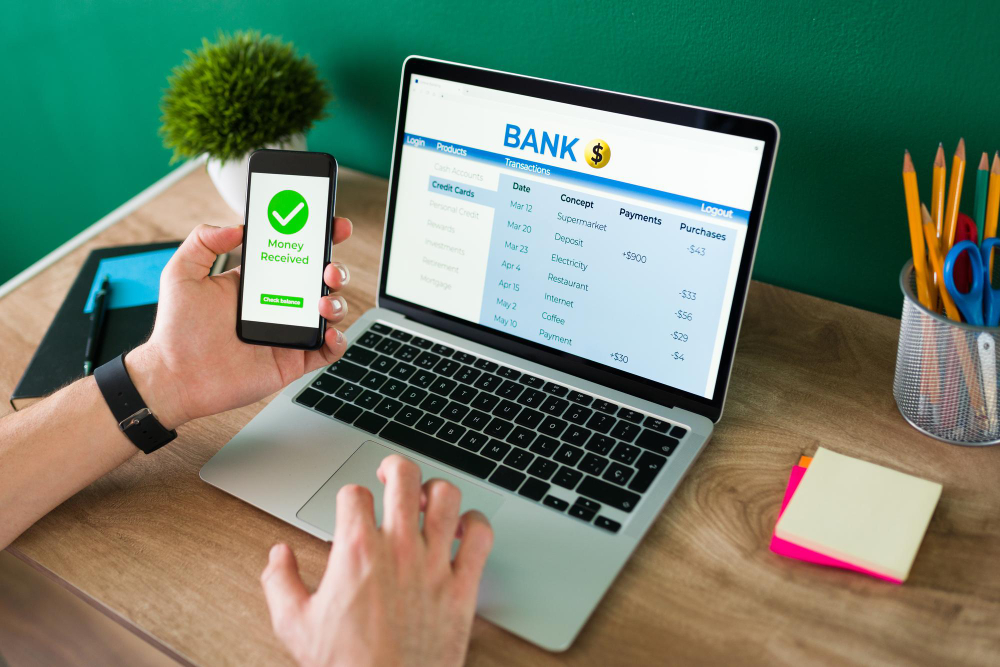How to Build a Personal Finance App: A Step-by-Step Guide for Fintech Startups

Strong 8k brings an ultra-HD IPTV experience to your living room and your pocket.
Personal finance apps have transformed the way people manage their money, offering convenient tools for budgeting, expense tracking, and financial goal setting. For fintech startups looking to tap into this lucrative market, developing a personal finance app can be a game-changer. In this guide, we'll outline the essential steps involved in building a personal finance app, incorporating key strategies for success and highlighting the role of fintech application development services in bringing your vision to life.
Step 1: Identify Your Target Audience and Their Needs
Before diving into the development process, it's crucial to understand the specific needs of your target audience. Personal finance app users may range from millennials seeking simple budgeting tools to small business owners needing comprehensive expense management solutions. Identifying your target demographic will help you define the app's core features and create a value proposition that sets your app apart from competitors.
Consider conducting market research to gather insights into common pain points and desired features. Look at existing personal finance apps to determine what works well and what could be improved. This information will shape the direction of your app development, ensuring you build a personal finance app that resonates with users.
Step 2: Define the Core Features of Your Personal Finance App
Once you have a clear understanding of your target audience, it's time to outline the core features that will drive the app's functionality. Some essential features to consider when planning to build a personal finance app include:
- Budgeting Tools: Allow users to set budgets, categorize expenses, and track their spending habits.
- Expense Tracking: Enable users to automatically track and categorize their expenses by syncing the app with their bank accounts.
- Financial Goal Setting: Provide tools for setting financial goals, such as saving for a vacation or paying off debt.
- Bill Reminders and Alerts: Include notifications for upcoming bill payments and low account balances.
- Reporting and Analytics: Offer visual reports and insights into users' spending patterns, helping them make informed financial decisions.
- Multi-Platform Access: Ensure the app is accessible across iOS, Android, and web platforms for a seamless user experience.
- Data Security Features: Implement encryption and security protocols to protect users' sensitive financial data.
- Including these features will provide a comprehensive solution that meets the diverse needs of users, enhancing the app's appeal and boosting retention.
Step 3: Choose the Right Technology Stack
The choice of technology stack plays a vital role in the success of your personal finance app. When considering fintech application development services, choose a tech stack that ensures robust performance, scalability, and security. Some common technologies used in fintech app development include:
Programming Languages: Swift for iOS, Kotlin for Android, and JavaScript frameworks like React Native for cross-platform development.
Backend Technologies: Node.js, Python, or Java for server-side programming, with cloud-based solutions such as AWS or Microsoft Azure for hosting.
Databases: Use secure databases like MongoDB or PostgreSQL for storing user data.
APIs: Integrate banking APIs such as Plaid for account syncing and transaction retrieval, as well as payment gateways like Stripe for payment processing.
The right technology stack will ensure your app runs smoothly, scales effectively as your user base grows, and remains secure.
Step 4: Focus on UI/UX Design
The design of your personal finance app plays a crucial role in user adoption and engagement. A user-friendly interface and intuitive experience will keep users coming back to the app. When working on the UI/UX design, consider the following:
Simple Navigation: Ensure users can easily navigate through different sections of the app, such as budget management, expense tracking, and reports.
Clear Visuals: Use charts, graphs, and visuals to represent financial data, making it easier for users to understand their financial situation at a glance.
Customizable Features: Allow users to personalize their dashboard, set financial goals, and categorize expenses based on their needs.
Responsive Design: Ensure the app looks good and functions well on various devices, including smartphones, tablets, and desktops.
Effective UI/UX design will not only attract users but also improve retention by delivering a seamless experience.
Step 5: Implement Strong Security Measures
Security is a top priority in fintech application development services, especially for personal finance apps that handle sensitive user data. To build a personal finance app that users can trust, implement the following security measures:
Data Encryption: Encrypt user data both in transit and at rest to prevent unauthorized access.
Multi-Factor Authentication (MFA): Require users to verify their identity using multiple authentication methods, such as SMS codes or biometric verification.
Compliance with Regulations: Ensure the app complies with data protection laws, such as GDPR or CCPA, to avoid legal issues.
Regular Security Audits: Conduct regular security checks and audits to identify potential vulnerabilities and fix them promptly.
Incorporating these security measures will help build user confidence and protect your app from cyber threats.
Step 6: Partner with a Fintech Application Development Services Provider
Developing a personal finance app requires expertise in fintech software development, data security, and user experience design. Partnering with a fintech application development services provider can be a game-changer. An experienced development team can help you navigate the complexities of building a fintech app, from choosing the right technology stack to implementing security measures.
Look for a development partner that offers:
Experience in Fintech Development: A proven track record in building fintech apps ensures the team understands industry standards and best practices.
Custom Development Services: A tailored approach that aligns with your specific app requirements.
Support and Maintenance: Ongoing support to update the app, fix bugs, and implement new features.
Partnering with the right fintech application development services provider will save time, reduce costs, and ensure your app is built to the highest standards.
Step 7: Test the App Thoroughly Before Launch
Before launching your personal finance app, it's essential to conduct rigorous testing to identify and fix any issues. Focus on different types of testing, including:
Functional Testing: Ensure all features work as expected.
Performance Testing: Check the app's speed and responsiveness under various conditions.
Security Testing: Verify the app's security measures to protect user data.
User Acceptance Testing (UAT): Involve a group of users in testing the app to gather feedback on usability and overall experience.
Thorough testing will help you launch a stable and reliable personal finance app that meets user expectations.
Step 8: Launch the App and Gather Feedback
Once your app is thoroughly tested, it's time to launch it on app stores like Google Play and Apple App Store. Create a marketing plan to promote the app and attract initial users. Consider using social media, content marketing, and partnerships with financial influencers to generate buzz.
After the launch, gather user feedback to identify areas for improvement. User reviews and in-app analytics can provide valuable insights into how users interact with the app, allowing you to make informed updates.
Step 9: Regularly Update the App Based on User Feedback
Building a successful personal finance app is an ongoing process. Regular updates will help you address user feedback, fix bugs, and introduce new features. Stay updated with fintech industry trends to keep your app competitive.
By regularly refining your app, you can build a personal finance app that evolves with user needs and maintains a loyal user base.
Conclusion
Building a personal finance app for the fintech industry involves multiple steps, from identifying target users and defining core features to ensuring robust security and launching the app. Leveraging fintech application development services can simplify the process and help you create a successful, user-centric app. By following the steps outlined above, fintech startups can build a personal finance app that stands out in the market and meets the evolving needs of users.
Note: IndiBlogHub features both user-submitted and editorial content. We do not verify third-party contributions. Read our Disclaimer and Privacy Policyfor details.


